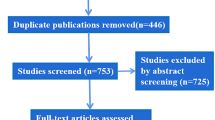Abstract
Background
Botulinum toxin type A is a widely used treatment of facial wrinkles. The objective of this study was to compare the efficacy and safety of a new botulinum toxin type A (Masport [abobotulinum toxin A], MasoonDarou Co) with DYSPORT® for the treatment of glabellar lines.
Methods
262 subjects with moderate-to-severe glabellar lines received either a fixed dose of 50 units of MASPORT® or DYSPORT® (Ipsen Company, England). Subjects were followed up at 14, 30, 60, 90 and 120 days after injection. Efficacy was assessed by investigator at maximum frown and rest and also by Subject Global Assessment of Change (SGA). The responders were defined as persons with +2 grade improvement from baseline for both investigator and patient assessment. The occurrence and duration of adverse effects were recorded up throughout the study.
Results
According to the investigator evaluations, the responder rate at maximum frown were 94.5% for MASPORT and 95.6% for DYSPORT group on day 30 and at rest were 85.45% and 85.68% for MASPORT and DYSPORT group, respectively. According to the subject self-assessment, the proportion of responders in MASPORT group at day 30 was 95.28% versus 97.04% for DYSPORT group. No serious drug related adverse effect was recorded in either study groups, and the rates of adverse effects were similar for both groups.
Conclusion
Abobotulinum toxin A [MASPORT] is equally safe and effective as commercial product [DYSPORT] for the treatment of glabellar lines with the dose of 50 units, up to 120 days.
Level of Evidence I
This journal requires that authors assign a level of evidence to each article. For a full description of these Evidence-Based Medicine ratings, please refer to the Table of Contents or the online Instructions to Authors www.springer.com/00266.





Similar content being viewed by others
References
Kattimani V, Tiwari RVC, Gufran K, Wasan B, Shilpa PH, Khader AA (2019) Botulinum toxin application in facial esthetics and recent treatment indications (2013–2018). J Int Soc Prev Commun Dent 9:99–105
Swift A, Liew S, Weinkle S, Garcia JK, Silberberg MB (2021) The facial aging process from the “Inside Out.” Aesthet Surg J 41:1107–1119
Dayan S, Yoelin SG, De Boulle K, Garcia JK (2019) The psychological impacts of upper facial lines: a qualitative, patient-centered study. Aesthet Surg J Open Forum. https://doi.org/10.1093/asjof/ojz015
Yaworsky A, Daniels S, Tully S et al (2014) The impact of upper facial lines and psychological impact of crow’s feet lines: content validation of the Facial Line Outcomes (FLO-11) Questionnaire. J Cosmet Dermatol 13:297–306
Pereira IN, Hassan H (2022) Impact of botulinum toxin for facial aesthetics on psychological well-being and quality of life: evidence-based review. J Plast Reconstr Aesthet Surg 75:4450–4463
Hu L, Feng Y, Liu W, Jin L, Nie Z (2019) Botulinum toxin type A suppresses arterial vasoconstriction by regulating calcium sensitization and the endothelium-dependent endothelial nitric oxide synthase/soluble guanylyl cyclase/cyclic guanosine monophosphate pathway: an in vitro study. Exp Biol Med 244:1475–1484
Whitcup SM (2021) The history of botulinum toxins in medicine: a thousand year journey. Handb Exp Pharmacol 263:3–10
Moon H, Fundaro SP, Goh CL, Hau KC, Paz-Lao P, Salti G (2021) A review on the combined use of soft tissue filler, suspension threads, and botulinum toxin for facial rejuvenation. J Cutan Aesthet Surg 14:147–155
Ahsanuddin S, Roy S, Nasser W, Povolotskiy R, Paskhover B (2021) Adverse events associated with botox as reported in a food and drug administration database. Aesthet Plast Surg 45:1201–1209
Comparison of safety and efficacy of MASPORT® to commercial product in treatment of patients with glabellar lines. Available at https://en.irct.ir/trial/14339. Accessed on Dec 2013
Gangigatti R, Bennani V, Aarts J, Choi J, Brunton P (2021) Efficacy and safety of Botulinum toxin A for improving esthetics in facial complex: a systematic review. Braz Dent J 32:31–44
Witmanowski H, Błochowiak K (2020) The whole truth about botulinum toxin - a review. Postepy Dermatol Alergol 37:853–861
Sethi N, Singh S, DeBoulle K, Rahman E (2021) A review of complications due to the use of botulinum toxin a for cosmetic indications. Aesthet Plast Surg 45:1210–1220
Zargaran D, Zoller F, Zargaran A et al (2022) Complications of cosmetic botulinum toxin a injections to the upper face: a systematic review and meta-analysis. Aesthet Surg J 42:327–336
Nestor MS, Han H, Gade A, Fischer D, Saban Y, Polselli R (2021) Botulinum toxin-induced blepharoptosis: Anatomy, etiology, prevention, and therapeutic options. J Cosmet Dermatol 20:3133–3146
King M (2016) Management of ptosis. J Clin Aesthet Dermatol 9:E1–E4
Borba A, Matayoshi S, Rodrigues M (2022) Avoiding complications on the upper face treatment with botulinum toxin: a practical guide. Aesthet Plast Surg 46:385–394
Acknowledgments
The authors would like to express their gratitude to all the volunteers who participated in the study and the staff at Razi Hospital for their assistance.
Funding
This study is fully founded by MasoonDarou Co.
Author information
Authors and Affiliations
Corresponding author
Ethics declarations
Conflict of Interest
Kamand Hedayat and Amir Hooshang Ehsani have no conflict of interest to declare.
Ethical Approval
All procedures performed in studies involving human participants were in accordance with the ethical standards of the institutional and/or national research committee and with the 1964 Helsinki declaration and its later amendments or comparable ethical standards.
Informed Consent
Informed consent was obtained from eligible participants.
Additional information
Publisher's Note
Springer Nature remains neutral with regard to jurisdictional claims in published maps and institutional affiliations.
Rights and permissions
Springer Nature or its licensor (e.g. a society or other partner) holds exclusive rights to this article under a publishing agreement with the author(s) or other rightsholder(s); author self-archiving of the accepted manuscript version of this article is solely governed by the terms of such publishing agreement and applicable law.
About this article
Cite this article
Hedayat, K., Ehsani, A.H. A Phase III Clinical Study of the Efficacy and Safety of Botulinum Toxin Type A (MASPORT) with DYSPORT for the Treatment of Glabellar Lines. Aesth Plast Surg 48, 324–332 (2024). https://doi.org/10.1007/s00266-023-03766-5
Received:
Accepted:
Published:
Issue Date:
DOI: https://doi.org/10.1007/s00266-023-03766-5




